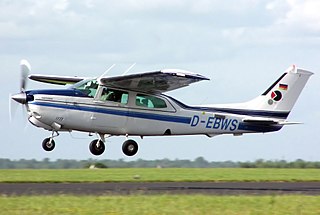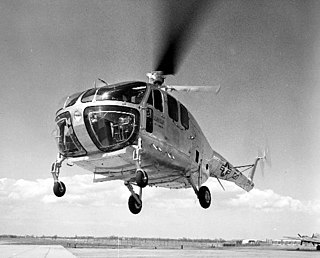Continental Copters was a US helicopter remanufacturer established by John L Scott in Fort Worth, Texas in 1959. The company's most significant product was the remanufacturing of Bell 47 airframes as specialised, single-seat agricultural aircraft as the El Tomcat. Continental Copters also assembled stock Bell 47s from spare parts.

Fort Worth is the 15th-largest city in the United States and the fifth-largest city in the state of Texas. It is the county seat of Tarrant County, covering nearly 350 square miles (910 km2) into four other counties: Denton, Johnson, Parker and Wise. According to the 2017 census estimates, Fort Worth's population is 874,168. The city is the second-largest in the Dallas–Fort Worth–Arlington metropolitan area, which is the 4th most populous metropolitan area in the United States.

The Bell 47 is a single rotor single engine light helicopter manufactured by Bell Helicopter. It was based on the third Bell 30 prototype, which was the company's first helicopter designed by Arthur M. Young. The 47 became the first helicopter certified for civilian use on 8 March 1946. More than 5,600 Bell 47s were produced, including those under license by Agusta in Italy, Kawasaki Heavy Industries in Japan, and Westland Aircraft in the United Kingdom. The Bell 47J Ranger is a modified version with a fully enclosed cabin and tail boom.

The Continental Copters El Tomcat was a 1950s American single-seat agricultural helicopter converted from a Bell 47G by Continental Copters of Fort Worth Texas. The first helicopter first flew in 1959 and was followed by a number of variants.
In the late 1970s, Continental worked on single-seat agricultural versions of the Bell 204 and 206, the latter flying as the Jet-Cat.

The Bell 206 is a family of two-bladed, single- and twin-engined helicopters, manufactured by Bell Helicopter at its Mirabel, Quebec, plant. Originally developed as the Bell YOH-4 for the United States Army's Light Observation Helicopter program, it was not selected by the Army. Bell redesigned the airframe and successfully marketed the aircraft commercially as the five-place Bell 206A JetRanger. The new design was eventually selected by the Army as the OH-58 Kiowa. Bell also developed a seven-place LongRanger, which was later offered with a twin-engined option as the TwinRanger, while Tridair Helicopters offers a similar conversion of the LongRanger called the Gemini ST. The ICAO-assigned model designation "B06" is used on flight plans for the JetRanger and LongRanger, and the designation "B06T" is used for the twin-engined TwinRangers.
The Continental Copters JC-1 Jet-Cat was an agricultural helicopter developed in the United States in the 1970s. Following the success that Continental Copters had enjoyed in converting Bell 47 airframes into specialized agricultural machines as the El Tomcat, the firm embarked on a project of creating a turbine-powered equivalent by converting a Bell 206. Like the El Tomcat, the Jet-Cat was to be only a single-seat aircraft with a fuselage radically reconfigured from its original design. The Jet-Cat was also equipped to carry slung loads.














